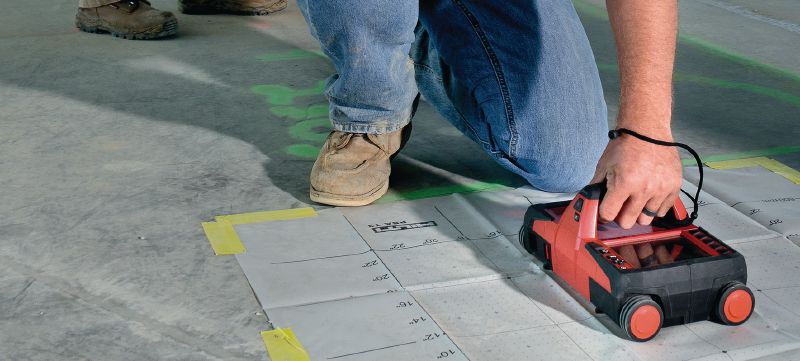Precision and Precision in Concrete Scanning Solutions
Precision and Precision in Concrete Scanning Solutions
Blog Article
Past the Surface Area: Leveraging Advanced Concrete Scanning Techniques for Unmatched Accuracy and Insight
In the world of building and construction and framework upkeep, the mission for accuracy and thoroughness is never-ending. Advanced concrete scanning methods have actually emerged as essential tools in this pursuit, using a glimpse below the surface to unveil a globe of crucial insights. By utilizing innovative modern technologies, specialists can reveal abnormalities, assess the condition of concrete structures, and make educated decisions that form the training course of projects. The implications of these methods expand far beyond plain surface-level evaluations, guaranteeing a deepness of accuracy and understanding that is unrivaled.
Significance of Advanced Concrete Scanning
The importance of utilizing sophisticated concrete scanning techniques hinges on the unmatched accuracy they supply for spotting sub-surface abnormalities and making certain structural integrity. By using cutting-edge technologies such as ground-penetrating radar (GPR), electromagnetic induction, and progressed finder imaging, building specialists can dive underneath the surface of concrete structures with a level of precision that much exceeds typical evaluation techniques. Concrete Scanning. These methods enable the identification of hidden dangers like rebar rust, voids, avenues, or post-tension cables that can endanger the stability and security of a structure in time
Additionally, advanced concrete scanning gives important understandings right into the general condition of a concrete aspect without the requirement for invasive steps, lessening the threat of triggering damages during the assessment process. The ability to determine the specific location and depth of possible issues enables targeted repair work and upkeep, inevitably prolonging the life expectancy of the structure and optimizing its performance. In essence, the relevance of sophisticated concrete scanning can not be overstated in the realm of building and framework maintenance, where precision and integrity are critical.
Kinds Of Cutting-Edge Technologies

Anomalies and Problem Detection

In addition to GPR, concrete scanning techniques like thermography and impact-echo screening are likewise efficient in discovering anomalies and defects. By leveraging check this these advanced methods, experts can proactively deal with architectural issues, ensuring the durability and safety of concrete structures.
Assessing Concrete Problem
How can engineers accurately review the problem of concrete structures to guarantee their long life and safety? Numerous innovative concrete scanning techniques are utilized for this purpose. Ground-penetrating radar (GPR) is commonly used to examine the internal framework of concrete, spotting gaps, cracks, and various other abnormalities that might endanger its strength.
Moreover, aesthetic evaluation stays a basic part of concrete problem analysis. Engineers aesthetically take a look at the you could check here surface area for indicators of degeneration, such as spalling, splitting, or staining. Combining non-destructive screening approaches with visual evaluations enables a thorough examination of concrete condition, enabling designers to identify possible problems at an early stage and implement prompt upkeep or fixings. By leveraging these sophisticated strategies, engineers can make sure the long-lasting resilience and safety and security of concrete frameworks.
Enhancing Decision-Making Procedures
In the realm of facilities management, enhancing decision-making procedures is essential for ensuring the efficient maintenance and long life of concrete frameworks. Improved decision-making procedures in concrete monitoring include utilizing innovative scanning techniques to gather comprehensive information on the condition of structures. By leveraging technologies such as ground-penetrating radar and 3D imaging, stakeholders can make educated decisions regarding substitute, reinforcement, or repair work methods.
These progressed scanning techniques provide very useful understandings right into the internal structure of concrete, identifying prospective issues such as spaces, cracks, or corrosion that might not be noticeable on the surface area. This degree of thorough details enables positive upkeep preparation, minimizing the risk of architectural failings and increasing the total lifespan of concrete structures.
In addition, by including electronic documents and evaluation devices right into the decision-making procedure, stakeholders can track the advancement of concrete problems with time, making it possible for predictive maintenance approaches and optimizing source allowance. Ultimately, the assimilation of advanced concrete scanning strategies enhances decision-making processes by supplying unmatched precision, understanding, and efficiency in facilities monitoring.
Verdict
To conclude, progressed concrete scanning techniques use exceptional precision and insight in detecting anomalies, flaws, and evaluating the problem of concrete structures. By leveraging sophisticated modern technologies, decision-making procedures can be boosted, leading to more reliable and enlightened options for preserving and fixing concrete facilities. These techniques play an important function in making certain the security and longevity of concrete structures, making them a crucial device in the area of building and construction and engineering.
In addition, progressed concrete scanning supplies very useful insights into the total condition of a concrete component without the demand for intrusive steps, lessening the risk of creating damage during the evaluation process - Concrete Scanning. Another cutting-edge modern technology is 3D more X-ray scanning, which provides detailed images of the inner framework of concrete, offering valuable info without the demand for destructive screening. Furthermore, Concrete Cover Meters are used to determine the density of concrete cover over reinforcement bars accurately. Enhanced decision-making procedures in concrete monitoring involve utilizing innovative scanning methods to gather in-depth information on the condition of frameworks.In conclusion, advanced concrete scanning methods supply unrivaled precision and insight in detecting abnormalities, flaws, and assessing the condition of concrete frameworks
Report this page